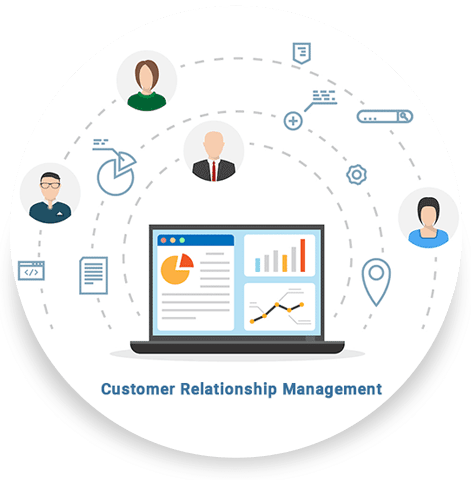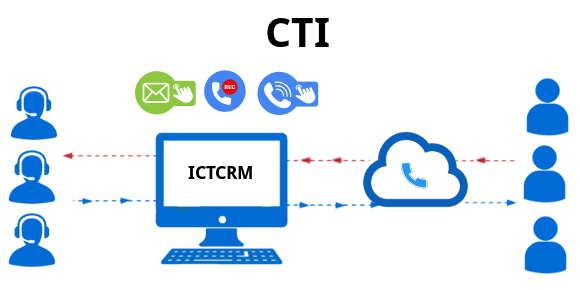In today’s fiercely competitive business landscape, delivering exceptional customer experiences has become a paramount requirement for maintaining enduring success. The convergence of customer relationship management (CRM) systems with cutting-edge unified communication (UC) technologies has emerged as a decisive element in enhancing the customer journey. This strategic amalgamation empowers enterprises to seamlessly align communication channels, consolidate customer data, and provide tailor-made interactions. This piece delves into the profound impact that arises from the fusion of CRM with Unified Communication www.ictcrm.com, ultimately enhancing and enriching the customer experience.
1. Understanding CRM with Unified Communication :
1.1 CRM Systems:
CRM systems stand as formidable software solutions meticulously crafted to aid businesses in the efficient management of customer interactions and relationships. These systems operate as centralized reservoirs, housing vital customer data, thus enabling enterprises to closely monitor and meticulously analyze customer engagements. By harnessing the insights gleaned from this data trove, businesses can curate bespoke experiences finely attuned to individual preferences and behaviors, ultimately nurturing and fortifying customer relationships.

1.2 Unified Communication:
Unified Communication (UC) refers to the integration of various communication channels, such as voice, video, messaging, and collaboration tools, into a single platform. It allows employees to communicate seamlessly and efficiently, regardless of the channel or device they use.

1.3 CRM Integration with Unified Communication:
CRM integration with unified communication involves combining CRM systems with UC technologies to enhance customer experience. It enables businesses to leverage customer data and communication channels in a unified manner, leading to improved customer interactions, streamlined processes, and better overall customer experience.
II. Key Benefits of CRM Integration with Unified Communication
2.1 Enhanced Customer Service:
The amalgamation of CRM and UC bestows customer service representatives with instantaneous access to customer data and a comprehensive communication chronicle. This capability equips them to furnish tailored assistance, expedite issue resolution, and deliver a coherent encounter across diverse communication channels. This elevation in customer service culminates in augmented customer contentment and allegiance.
2.2 Improved Collaboration and Efficiency:
By integrating CRM with UC, businesses can facilitate collaboration among team members. Relevant customer information can be shared instantly, enabling employees to work together more effectively and deliver a consistent customer experience. Unified communication tools also streamline internal communication, reducing response times and enhancing operational efficiency.
2.3 Personalized Marketing and Sales Efforts:
The fusion of CRM with UC confers businesses with the capability to attain all-encompassing customer insights. By delving into communication data such as call recordings, chat transcripts, and email exchanges, organizations can extract precious intelligence regarding customer inclinations, pain areas, and purchasing patterns. This amassed data evolves into an invaluable asset, facilitating the customization of marketing initiatives, the precise targeting of distinct customer segments, and the tailoring of sales endeavors to align with individual requirements. Harnessing this amalgamated data empowers businesses to orchestrate impactful and precisely aimed strategies, thereby heightening customer engagement and contentment to remarkable levels.
2.4 Omnichannel Customer Experience:
In the contemporary landscape, customers hold the anticipation of encountering a flawless journey across diverse avenues, encompassing voice calls, emails, chats, and social media platforms. The integration of CRM with UC equips businesses with the means to realize an all-encompassing omnichannel experience by harmonizing customer data and interactions throughout a spectrum of communication channels. This harmonious uniformity elevates customer contentment and mitigates the chances of informational disparities or disjointed encounters.
Implementing CRM integration with unified communication:
Integrating CRM systems with unified communication (UC) technologies can be a transformative step for businesses looking to enhance their customer experience. However, successful implementation requires careful planning and execution. Here are some key considerations and steps to follow when implementing CRM integration with unified communication:
Define Your Objectives and Goals
Start by clearly defining your objectives for CRM integration with unified communication. What specific outcomes do you hope to achieve? For example, you might aim to improve customer service, streamline communication processes, or enable personalized marketing efforts. Identifying these goals will help guide the implementation process and ensure that the integration aligns with your business objectives.
Assess Your Current Infrastructure
Evaluate your existing CRM system and communication infrastructure to identify any gaps or limitations. Consider the scalability, compatibility, and flexibility of your CRM and communication tools. Assess the strengths and weaknesses of your current systems to determine if any upgrades or changes are necessary before integration.
Select the Right CRM and UC Solutions
Selecting the right CRM and unified communication solutions is crucial for successful integration. Look for CRM systems and UC platforms that are compatible and offer robust integration capabilities. Consider factors such as ease of use, scalability, security, and vendor support. It is advisable to involve key stakeholders, including IT professionals, in the selection process to ensure that the chosen solutions meet the organization’s requirements.
Plan and Design the Integration Strategy
Create a comprehensive integration strategy that outlines the specific steps and timeline for implementation. Define the integration points between your CRM and UC systems, such as customer data synchronization, communication channel integration, and user access controls. Consider any customization or configuration requirements to align the integrated systems with your business processes.
Data Mapping and Migration
Ensure that your customer data is clean, organized, and compatible between the CRM and UC systems. Perform a thorough data mapping exercise to identify the fields and attributes that need to be synchronized. Develop a data migration plan that outlines how the existing data will be transferred or transformed to fit the integrated environment. Data integrity and security should be top priorities during this process.
Conclusion:
CRM integration with unified communication is a powerful strategy for enhancing the customer experience and driving business success. By combining CRM systems with UC technologies, businesses can streamline communication channels, consolidate customer data, and provide personalized experiences. The impact of CRM integration with unified communication is multi-faceted and yields several key benefits.
Firstly, integrating CRM with UC enables businesses to deliver enhanced customer service. Customer service representatives gain real-time access to customer data and communication history, allowing them to provide personalized support and resolve issues more efficiently. This leads to higher customer satisfaction and loyalty.
Leveraging Open Source in ICT
